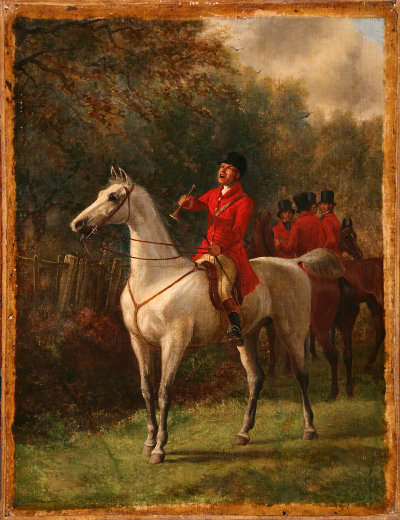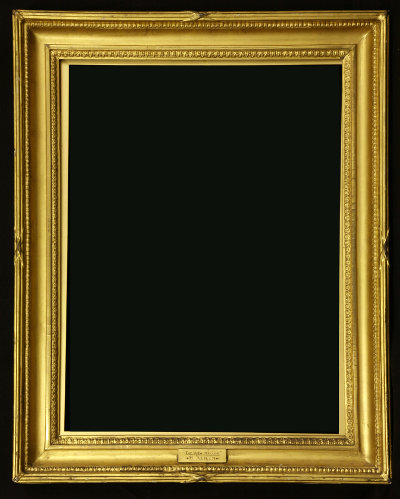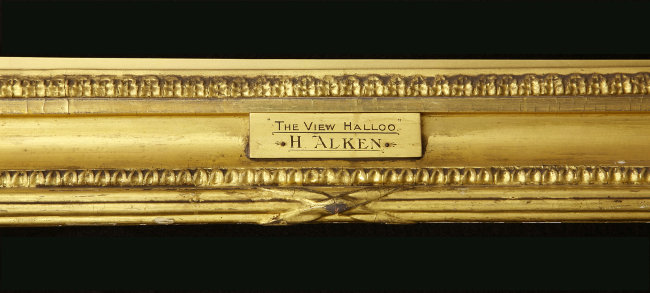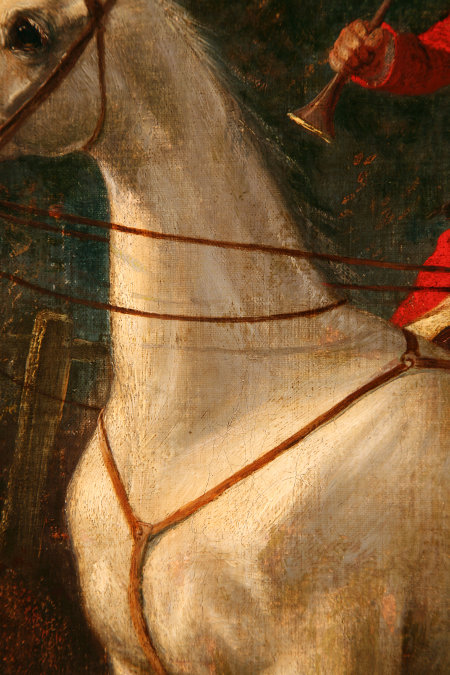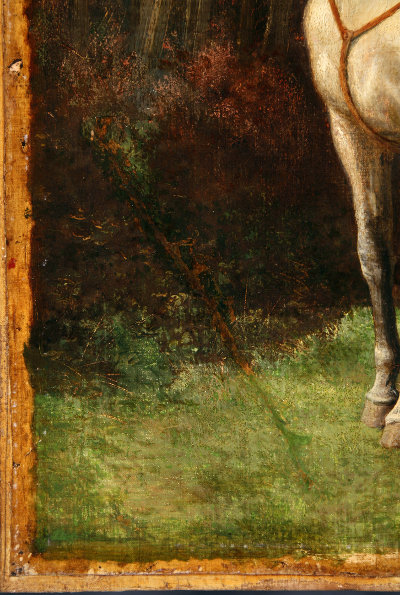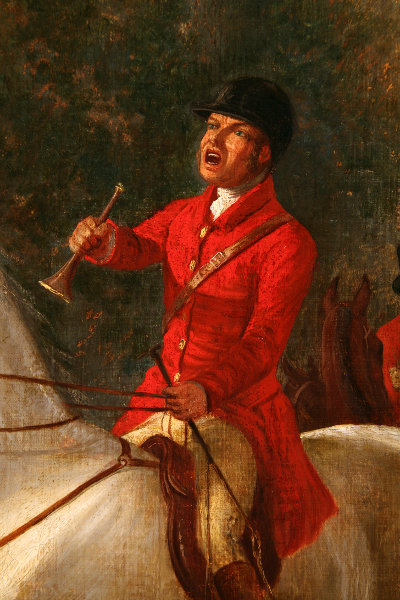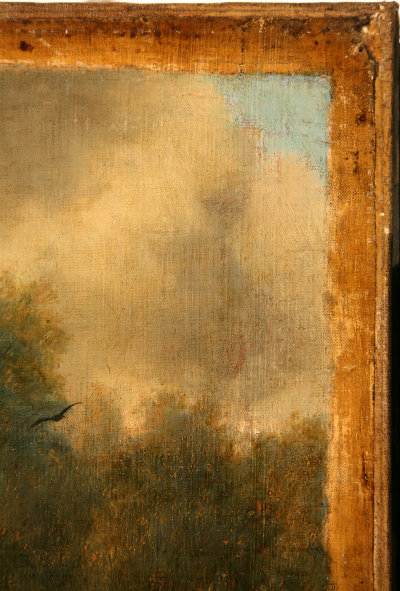TITLE:
The View Halloo
TECHNIQUE: Oil on canvas
DIMENSIONS: 580 x 490 mm
FRAME: Wooden, gesso moulded, gilded gold
TREATMENT: October 2009 β January 2010
CONDITION REPORT
SECONDARY SUPPORT
This is a 5 member mortise-and-tennon stretcher. The general condition is good. The stretcher may be a later addition, as the painting has been lined commercially.
The following inscriptions appear on the top left of stretcher:
βJames Bourlet & Sons, Ltd.,
Fine Art Packers, Frame Maker
C 23863
17 & 18, Nassau Street,
Mortimer Street, W.
Phone;- Museum 1817 & 7588β
Another label reads βNo 115β that is located in the centre of the cross bar.
PRIMARY SUPPORT
The primary support is a medium-weight tabby weave canvas. The lining canvas is of the same weave but slightly thinner in weight. Part of the original tacking margins have been flattered and extends to make the dimensions of the painting larger. It is a thick paste/composition lining. The original canvas has been torn and repaired and this can be seen in the lower left area. Some dirt is caught between the canvas and stretcher.
GROUND
The ground appears to be off white in colour and in a sound condition.
PAINT LAYER
The artist has applied the paint layer fairly evenly. It now appears thin, showing the ground in many places due to previous over cleaning. Pentiments of other reins can be seen in the neck of the white horse. Retouching can be seen in the sky. These are lighter in colour than that of the original paint layer. Basic retouching can also be seen in the area of the tear, lower left hand side. It is less detailed than that of the original.
VARNISH LAYER
The natural resin varnish layer is discoloured and a layer of surface dirt covers this. This is not the original varnish.
TREATMENT CARRIED OUT
- Photographic record was taken and this was maintained throughout the treatment.
- Tests were carried out to remove the surface dirt. After the appropriate reagent was found, cleaning proceeded safely and effectively. Cleaning proceeded using a swab stick.
- Following tests, including a safety margin-cleaning test, an organic solvent was found to remove the discoloured varnish layer safely and effectively. Cleaning proceeded using a swab stick.
- An isolating brush conservation varnish was applied. Losses were retouched and a final conservation varnish was applied.
- The frame was cleaned; both front and back, losses filled and the painting was secured in the frame using brass plates.
